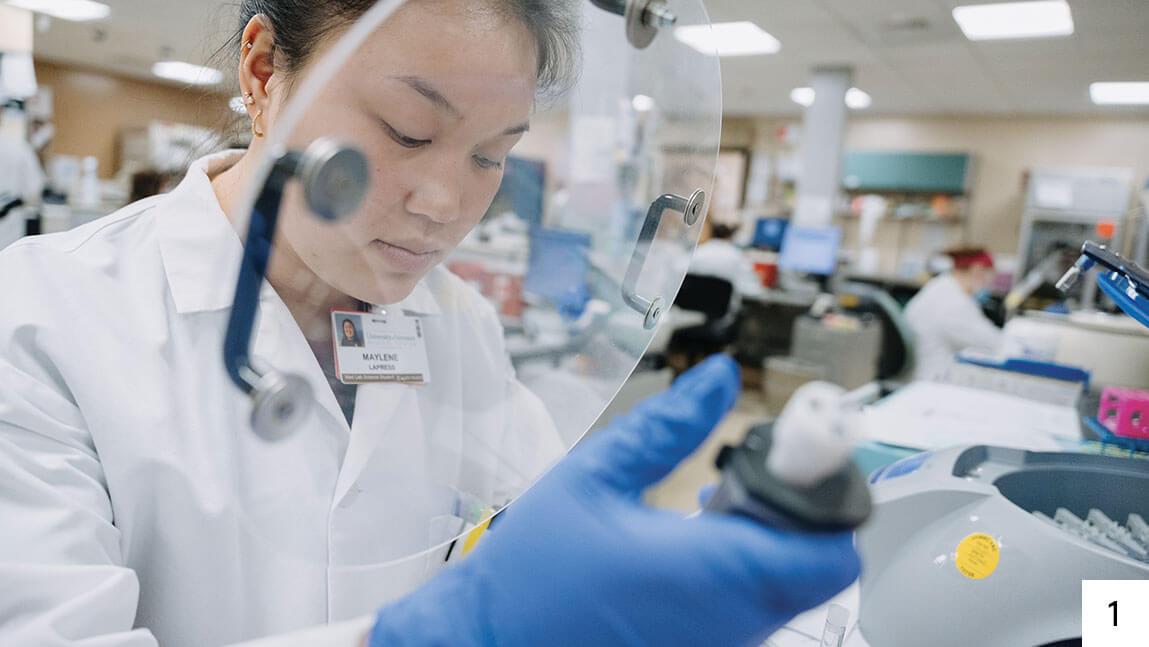In the coldest months of the year, the University of Vermont does not retreat. (Though some of us do enjoy putting up our wooly feet by the fire.) The place is crackling with research and teaching, learning and laughter, mountain adventures and meditative moments. We dropped in on UVM students, staff, and faculty from before sunup to long after dark—to see how winter, as Robert Frost wrote, “lifts existence on a plane of snow.”
Explore more of UVM's Winter Snapshot →
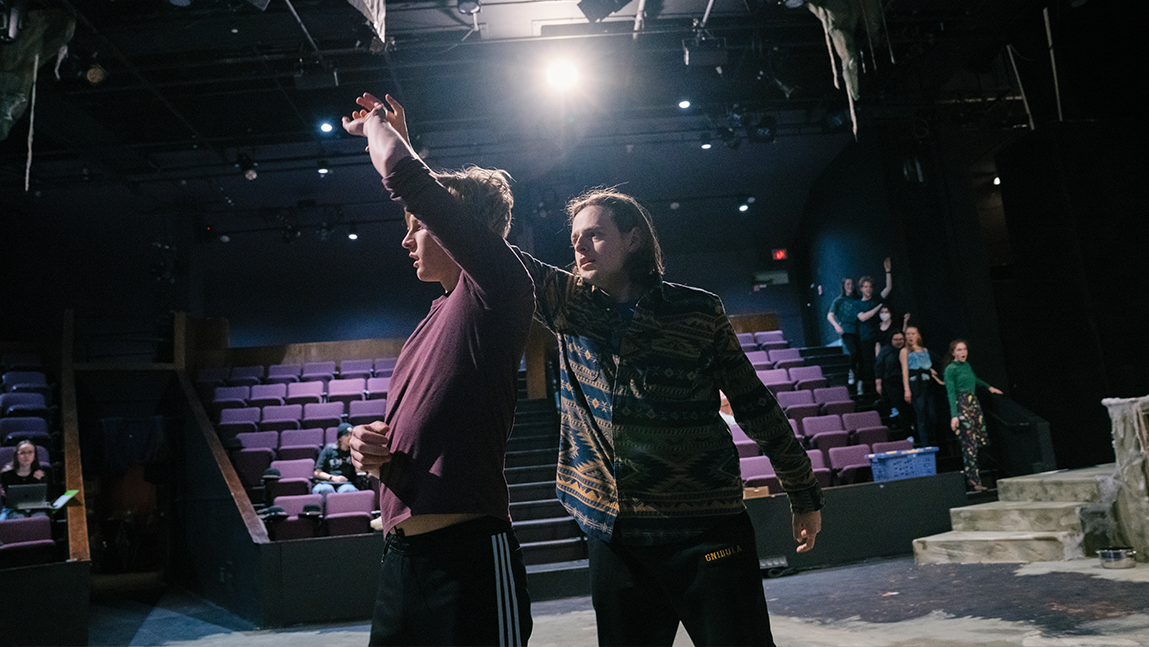
In a few weeks, the house lights will dim and the seats of UVM’s black box Royall Tyler Theatre will be filled with an audience to watch this spring’s performance of Bat Boy: The Musical. For now, student actors sing their lines to empty seats and rehearse late into the evening in preparation for opening night.

Bacteria growing in a Petri dish. These are used by medical students to practice bacterial identification testing techniques—including Gram staining. It’s part of a course with the no-nonsense name, Attacks and Defenses. Their instructors: medical student Kali Amoah ’23 (also pursuing a master’s degree in pathology) and Christina Wojewoda, M.D., associate prof. of pathology & laboratory medicine. Later, patients’ symptoms were read out and the students tried to determine which pathogen may be the culprit in an illness.
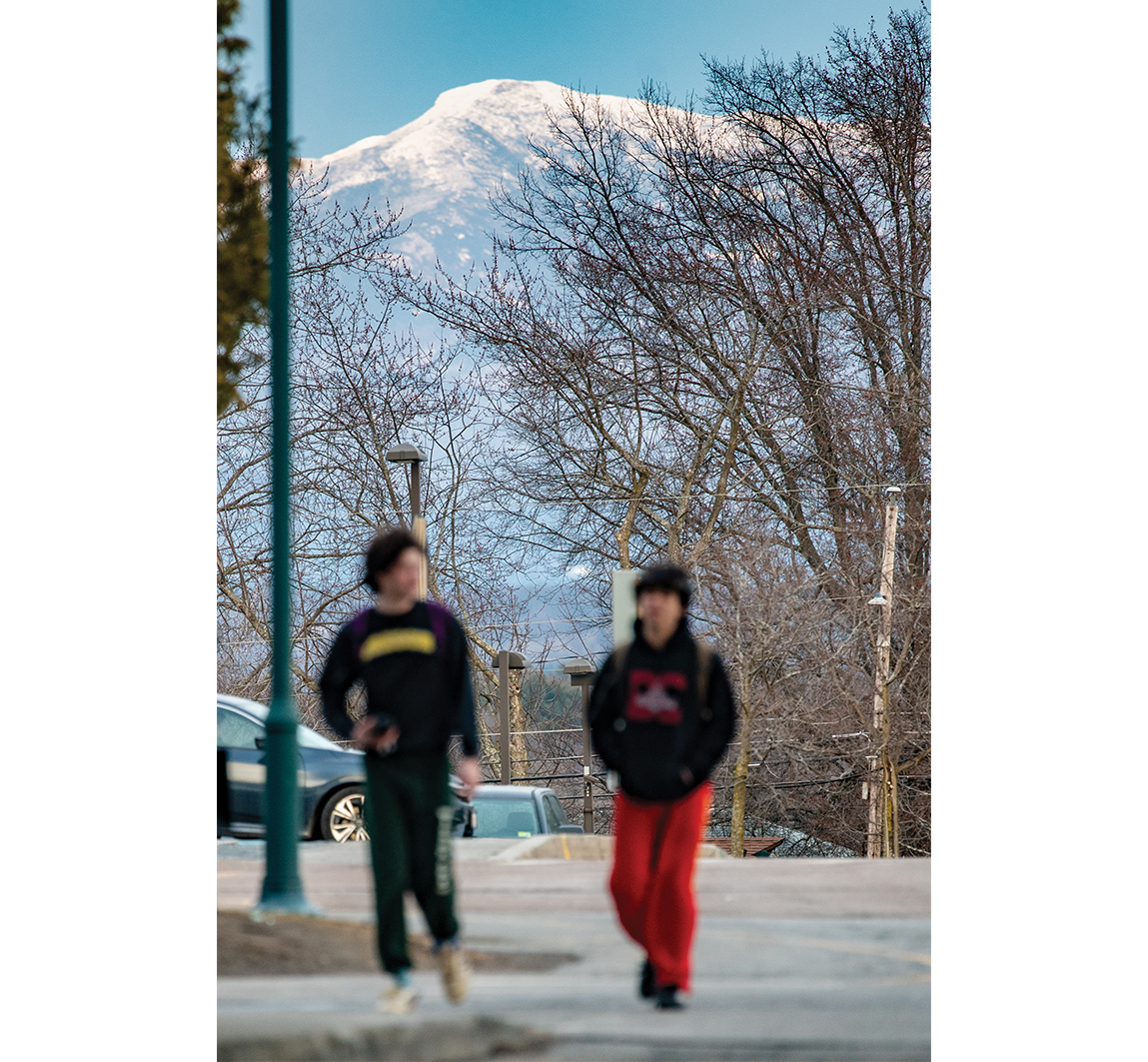
Year-round, Mount Mansfield forms a spectacular backdrop to daily life on campus. This snowy view of “The Chin,” the northern reach of the peak, calls to winter hikers and backcountry skiers from outside the Gucciardi Fitness & Recreation Center. And the entire ridge is a UVM-owned natural area—meaning the mountain isn’t just visible from campus, it’s part of campus.
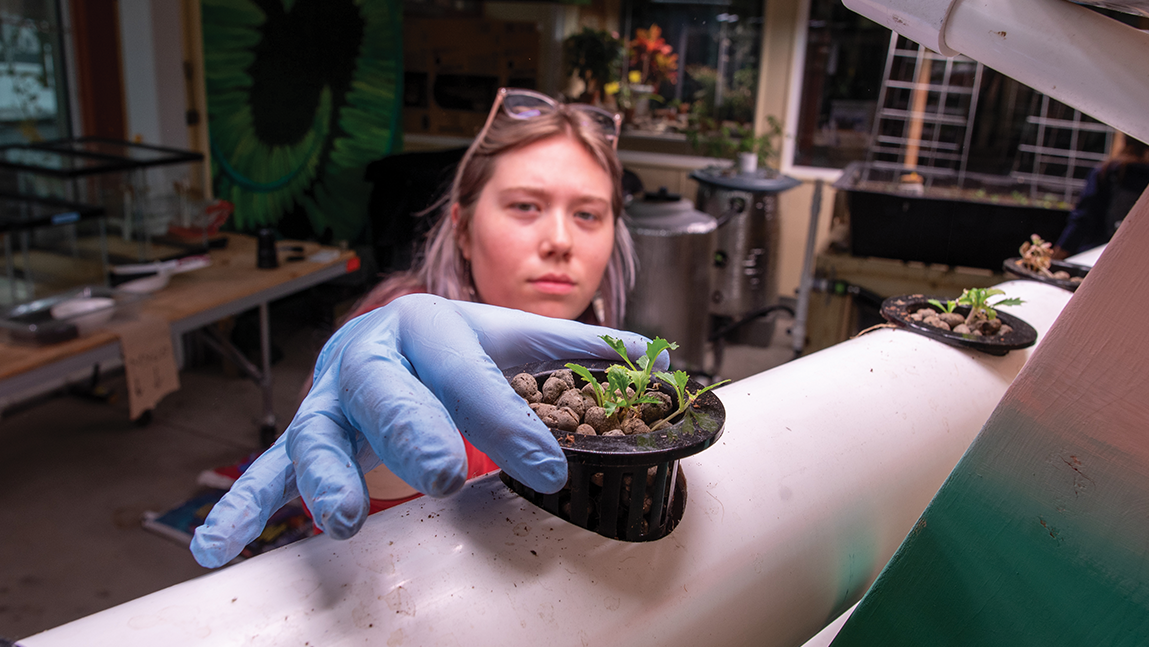
For a course on ecological design, Katarina Menice ’23, attends to lettuce (along with pole beans, snap peas, and tilapia fish) in the Aiken Building’s Eco-Design Makerspace where faculty and students study improvements to wastewater treatment and nutrient recovery. Menice, an environmental science major, says: “It all cycles around.”
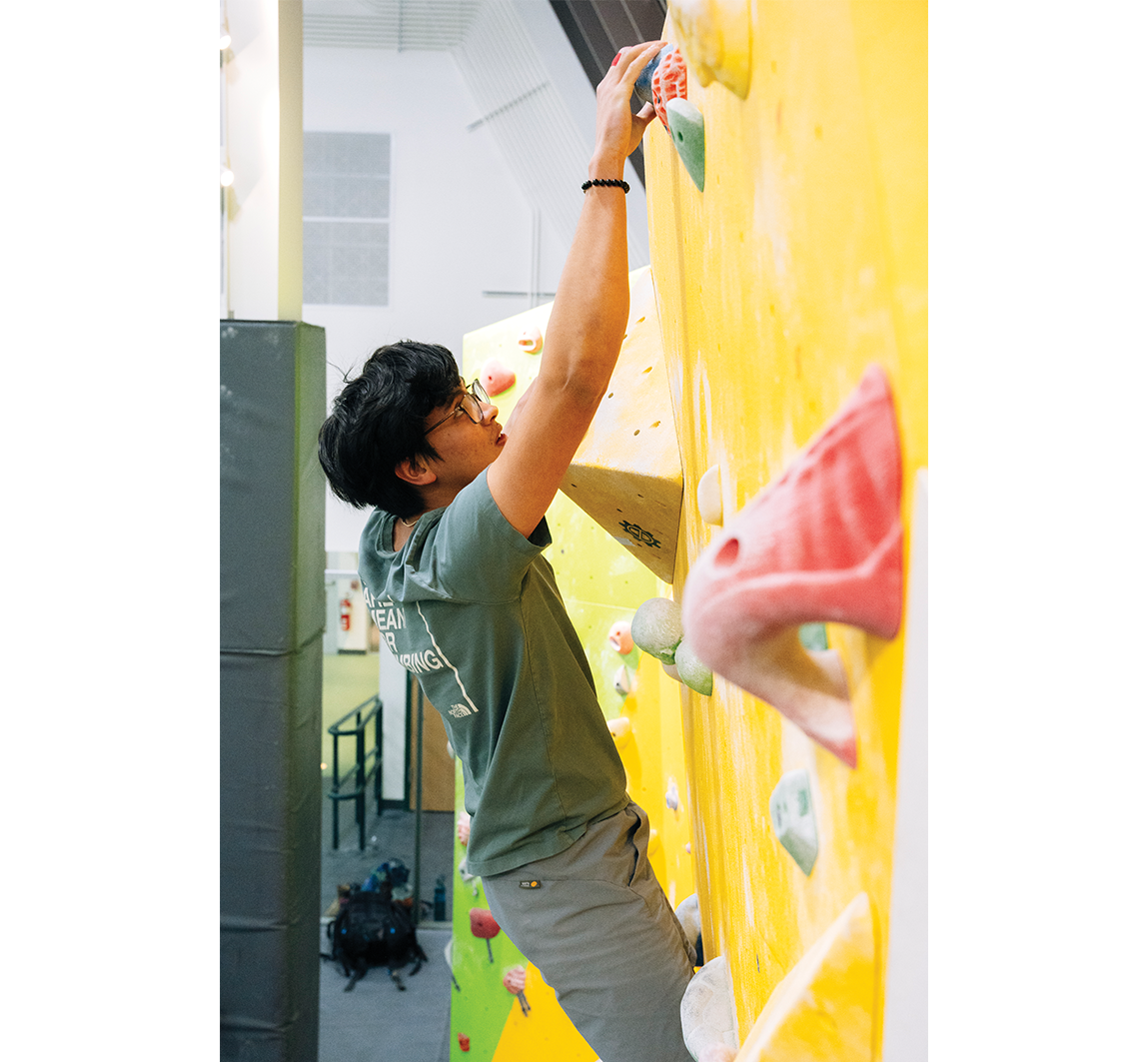
It's all about momentum when doing a “dyno”—or dynamic move—in climbing. A student attending a POCO—People of Color Outdoors—Intro to Bouldering class reaches with both hands to top out on the new bouldering wall in Patrick Gym.
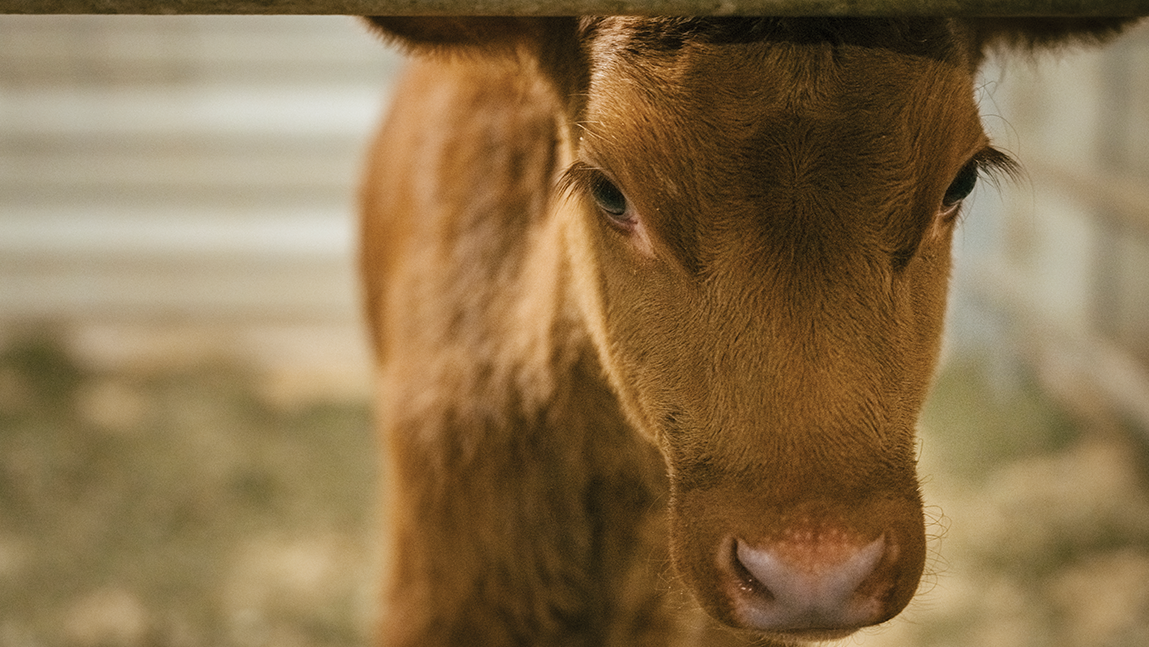
A bit sleepy-eyed, one-week-old Angus calf Rigatoni waits in the early hours for students in the CREAM program to deliver his morning meal. It’ll be his first time eating from a bucket rather than a bottle.

The crew of the Marcelle Melosira, UVM’s new research vessel for the Rubinstein School of Environment and Natural Resources, are exploring new ideas for winter boat storage. A series of water circulators, pictured above, can be tethered together and submerged just a few feet underwater. The propellors on these circulators provide enough disturbance on the surface to prevent freezing, which could allow the vessel to be docked at the laboratory year-round.
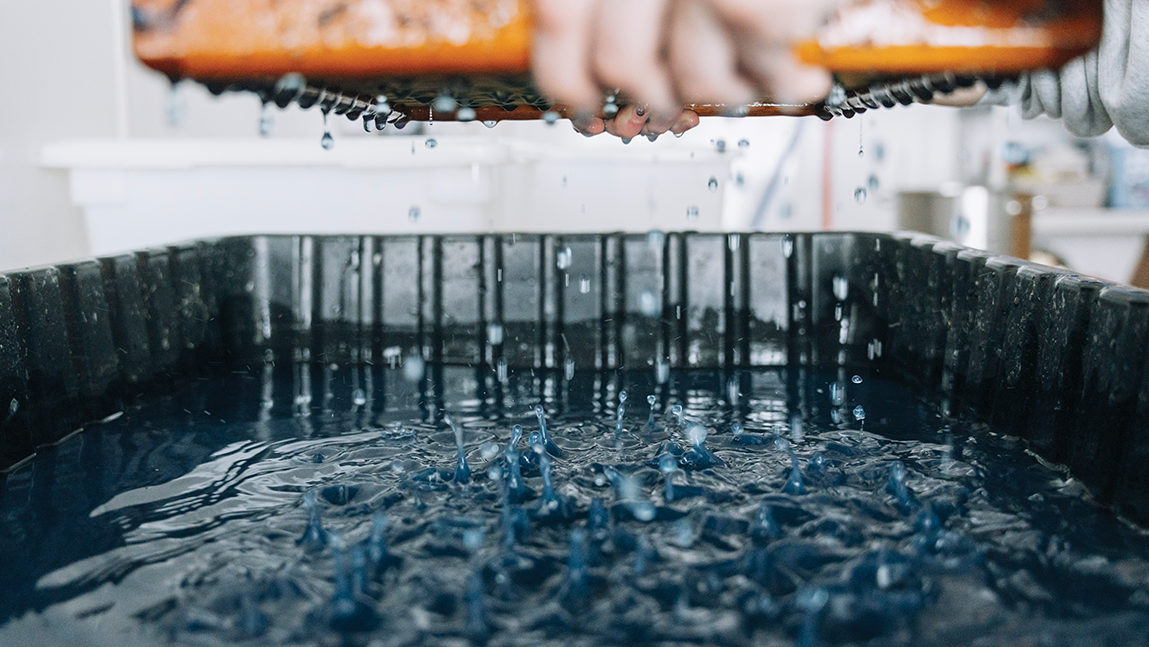
Droplets of blue-dyed water are strained from a fiber-based pulp in Professor Steve Kostell’s biofiber lab. What started as fluffy food packaging—destined for the trash—is, instead, in the process of becoming something useful: paper. Through trial and error, Annika Zimmermann ’23, a community-centered design major, has been exploring how fibers from different waste materials can be "upcycled" through regenerative design.
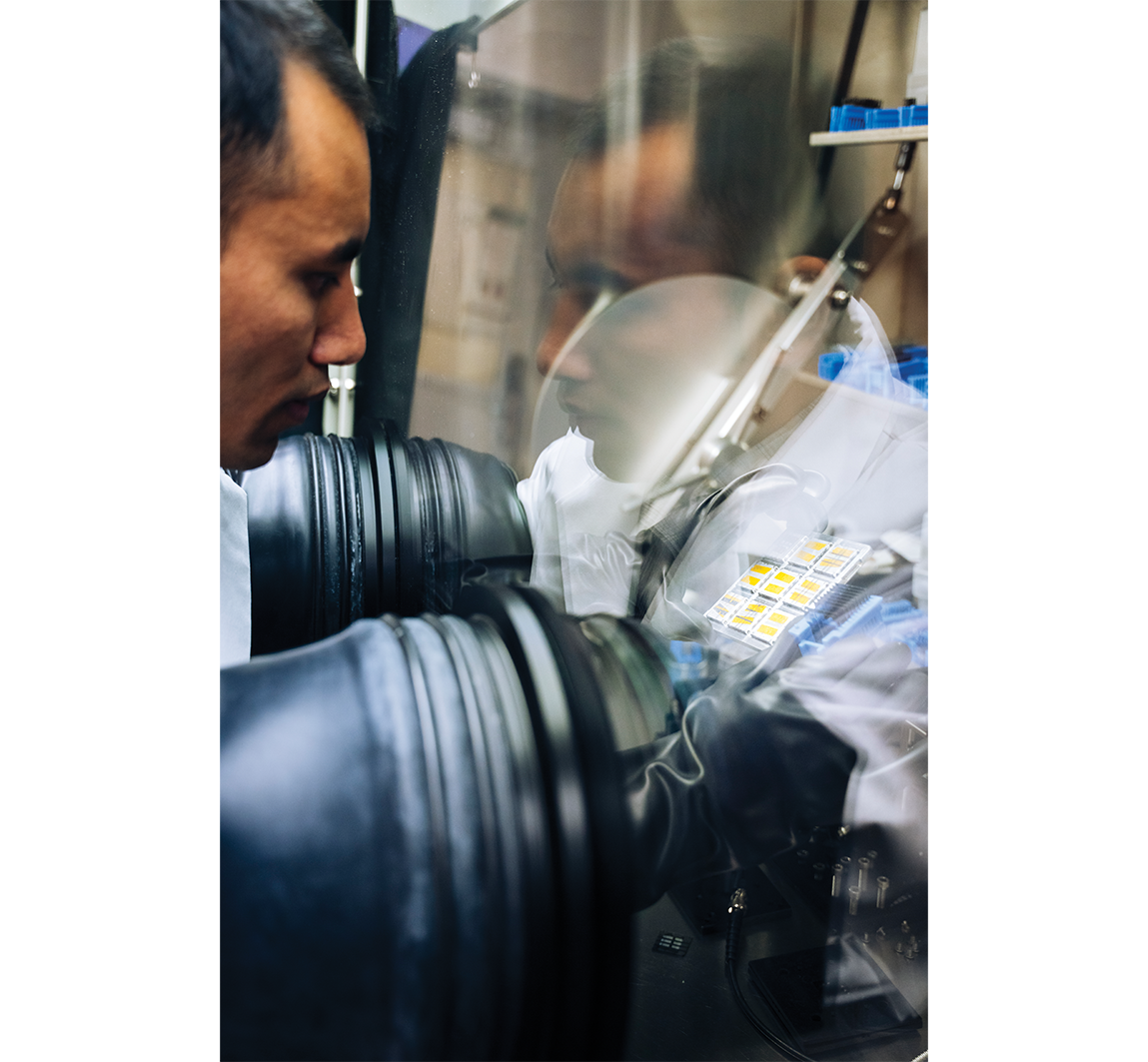
Khadga Thakuri, a fourth-year Ph.D. student, uses steady hands inside a pressure-treated hood in Professor Matthew White’s physics lab. Thakuri and White explore how photonic structures, like opals, can extend energy transfer between molecules. This research could help increase these transfer distances up to 500X farther than what is found in natural processes—like photosynthesis.
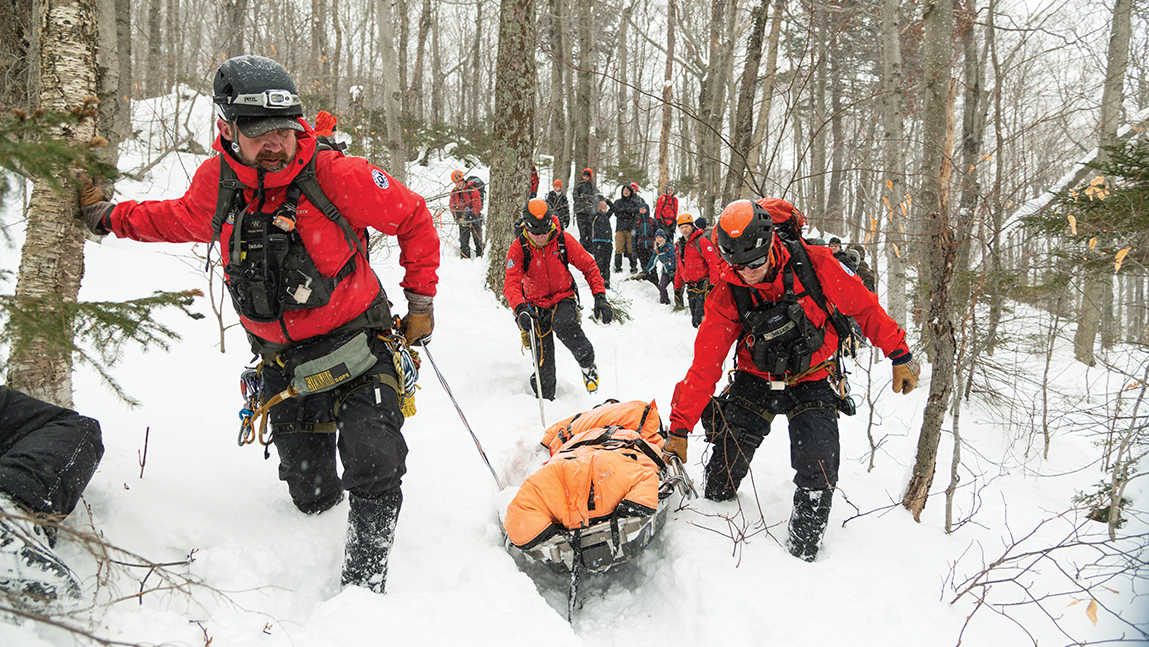
It looks rugged because it is. In deep snow, fourth-year medical students participate in backwoods rescue scenarios with the Stowe Mountain Rescue Squad in the Green Mountain National Forest. White coat not needed. Best to bring hat and mittens for this elective course, Winter Wilderness Medicine.
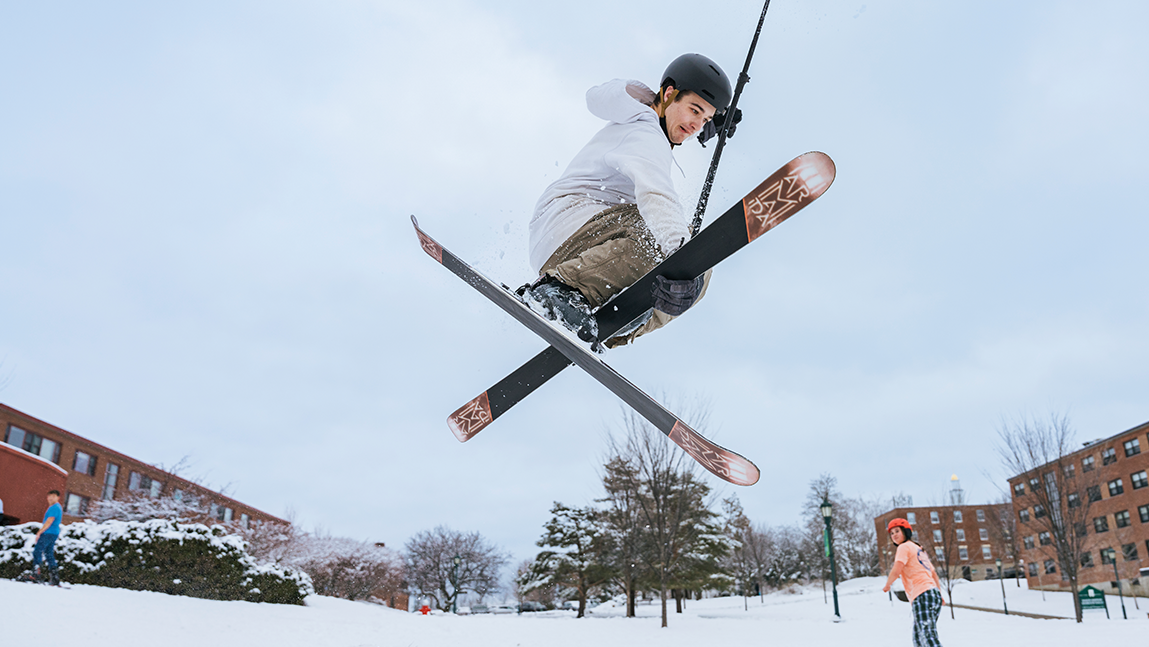
Fresh snow + a casual Saturday morning + any slope that students can find = a stylish method on Redstone campus.
View the total Winter Snapshot →
